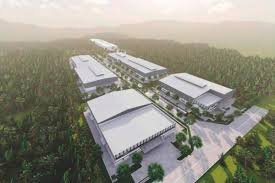Malaysia’s skyline is changing, not just with taller buildings but also with smarter, greener designs. It’s fascinating to see how sustainability has become a key player in the real estate scene here. Let’s take a closer look at how modern Malaysian buildings are embracing eco-friendly practices, spotlighting a standout example: Ivory Plaza.
The Rise of Green Building in Malaysia
Over the past decade, there’s been a noticeable shift towards sustainable construction in Malaysia. Developers are increasingly aware of the environmental impact of their projects and are seeking ways to reduce their carbon footprint. This movement isn’t just about being eco-conscious; it’s also driven by the demand from consumers who want their living and working spaces to reflect their values.
Key Elements of Sustainable Building
Sustainable buildings incorporate a variety of features to minimize environmental impact. Efficient energy use is at the forefront, often achieved through solar panels, energy-efficient lighting, and smart HVAC systems. Water conservation methods, such as rainwater harvesting and low-flow fixtures, are also common. Additionally, the use of sustainable materials like recycled steel and timber helps reduce the overall environmental footprint.
Ivory Plaza: A Beacon of Sustainability
One shining example is Ivory Plaza. This development has integrated several green practices that set it apart in the Malaysian real estate market. From its green rooftops to its state-of-the-art waste management systems, Ivory Plaza showcases what’s possible when sustainability is a priority.
Energy Efficiency at Its Core
At Ivory Plaza, energy efficiency isn’t an afterthought—it’s built into the very foundation of the building. Advanced insulation materials keep the indoor climate stable, reducing the need for excessive heating or cooling. Additionally, smart lighting systems adjust based on the time of day and occupancy levels, ensuring that energy is used only when necessary.
Water Conservation Strategies
Water is a precious resource, and Ivory Plaza takes its conservation seriously. The building employs rainwater harvesting systems that collect and store rainwater for non-potable uses like irrigation and flushing toilets. Moreover, the fixtures installed are designed to minimize water usage without compromising functionality.
Use of Sustainable Materials
Choosing the right materials is crucial for sustainability. Ivory Plaza uses recycled and locally sourced materials wherever possible, reducing transportation emissions and supporting the local economy. These materials are not only eco-friendly but also durable, ensuring that the building stands the test of time without frequent renovations or replacements.
Green Spaces and Community Impact
Green spaces aren’t just for aesthetics; they play a vital role in improving air quality and providing a peaceful environment for occupants. Ivory Plaza features lush green terraces and communal gardens that offer a respite from the hustle and bustle of city life. These spaces encourage a sense of community and well-being among residents and workers alike.
Challenges and Future Directions
Adopting sustainable practices isn’t without its challenges. Initial costs can be higher, and there’s a learning curve for both developers and occupants. However, the long-term benefits—such as lower operating costs, increased property values, and a smaller environmental footprint—often outweigh these hurdles. Looking ahead, Malaysia is poised to continue this green momentum, with more buildings like Ivory Plaza leading the charge.
Community and Environmental Benefits
Sustainable buildings like Ivory Plaza don’t just benefit the immediate occupants; they also have a positive ripple effect on the surrounding community and environment. Lower energy and water consumption reduce the strain on local resources, while green spaces enhance urban biodiversity and provide habitats for various species. Moreover, these buildings set an example, inspiring other developers to adopt similar practices.
Innovations on the Horizon
Technology is continually advancing, offering new ways to enhance sustainability in real estate. Innovations such as smart grids, which optimize energy distribution, and green roofs that support urban agriculture are becoming more common. Buildings like Ivory Plaza are at the forefront of integrating these technologies, ensuring they remain relevant and efficient in the ever-evolving landscape of sustainable construction.
Conclusion
The Malaysian real estate market is embracing sustainability in meaningful ways, and Ivory Plaza stands as a testament to what’s achievable when eco-friendly practices are prioritized. As the demand for greener living and working spaces grows, we can expect to see even more innovative and sustainable buildings shaping Malaysia’s future.







